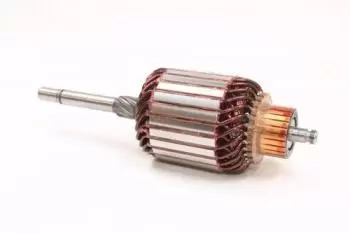
The armature is a component that is part of an electrical machine. This element is magnetically coupled to the inductor which is the site where an electromotive force is generated by induction. It is also called the armature of an engine.
In electrical engineering, armature is the name that has historically been given to the conductive wire in which an electrical current is induced.
Armature electrical conductors also generate alternating current in direct current machines. This process is carried out thanks to the switch with which the direction of the current can be reversed periodically. It can also be done through electronic switching.
In the first generators and electric motors, the armature was in the rotor and was made up of coils wound on the ring that served as the base. This system causes the winding to generate a weaker magnetic field due to the greater air gap space.
Later, manufacturers replaced them with turns or lead wires that were inserted into grooves to minimize the air gap distance. In this case, a spacer material is used coating the coil to isolate the winding from the groove.
Currently, in direct current motors the armature is the rotor and in asynchronous alternating current motors, the armature is the stator. These types of motors are also called induction motors.
The armature in electric motors
In electric machines and motors, the armature is the part of the machine where electrical energy is converted into rotational kinetic energy (rotational speed) through electromagnetic induction.
In electrical machines that work with direct current, the armature is the part that rotates. The rotating part of these motors is made up of a drum made up of 0.5 mm thick silicon iron plates placed one on top of the other with a series of grooves on the outside. Inside these grooves the motor winding is placed. Electromotive force is induced in coils when it rotates within the rotating magnetic field created by the inductor.
The ends of the coils are connected to sheets of copper called thin. The thin lines are distributed around the periphery of an insulating cylinder called a collector. The collector is responsible for connecting the coils with the external electrical circuit through static carbon brushes that rub against the thin ones.
The armature in alternators
In alternators, the armature is the fixed part of the machine. In this type of engine, the armature is made up of a hollow cylinder of silicon steel sheets arranged one on top of the other with the grooves on the inside to house the coils. Electromotive force is induced in these coils when the inductor rotates inside the armature.
On the outside of the housing there are terminals to connect the armature coils. The purpose of these terminals is to connect the coils with the external circuit to which they deliver the induced current.



